Kids These Days Make A Joke Out Of Everything
Nostalgia and the Current Clown Horror Resurgence
Hi all! So, I saw Clown In A Cornfield on Tuesday and absolutely loved it, so now I’m going to discuss the current trend towards clowns in horror media. I discussed it a little bit in my post about the Terrifier franchise in relation to politics, but I’m going to go deeper into it now, inspired by Clown In A Cornfield.
This post’s charity is yet another plea for everyone reading this to go support your local library, and also your local independent theater. Supporting the arts supports the people, and their history. And, as I’ve been over before, supporting the library supports literally everything else you might want to support, and it’s free. So go to the library, and your local indie theater!
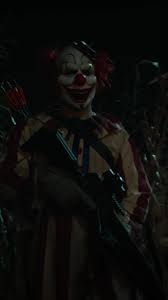
So after I saw Clown In A Cornfield, I had a lot of things to reflect on. And one of them was the prevalence of clowns in recent horror. Or at least, in recent popular horror. The most successful horror movies in recent memory - that aren’t Sinners - are clown-based. The Terrifier franchise released what is now the highest-grossing unrated movie in history this most recent November with its third installment. The 2017 remake of Stephen King’s It replaced The Exorcist as the highest-grossing horror film of all time after The Exorcist had had a death grip on that title for forty four years. And now Clown In A Cornfield has been very successful opening weekend, creating a new box office record for IFC Entertainment. In short, the people are very keen on clowns right now. Clowns are hip. Clowns are in. Clowns are scary.
Now, clowns have generally always been scary. They’re a very common childhood fear, just like the dark, or spiders. But they’re certainly becoming more scary now, if box office numbers have anything to say about it (which, we’ve learned over years of Fearmongering, they do). So why the clown renaissance now?
First, let’s look into why it’s a renaissance in the first place. There was a small but distinct place for clowns in the ‘80s slasher boom (looking at you, Killer Klowns), but they weren’t too much of a staple. That said, there have been just enough clown horror movies interspersed throughout horror history that what’s happening with clowns now can definitely be called a resurgence. It’s not a new genre by any means. House of 1000 Corpses’ character Captain Spaulding and It (1990)’s Pennywise made sure of that.
So, clown horror isn’t a new or unknown subgenre. Since fears of clowns are pretty common, so are movies that use that fear as a central asset to their fright factor. But there has definitely been a wave of clown horror in recent memory, and, as I’ve mentioned, it’s been very successful. And there are a couple contributing factors that I can think of.

First, there’s also been a big wave of nostalgia. ‘80s style horror media like the Fear Street franchise (Prom Queen out May 23 get hype!), Stranger Things, AMC’s Interview With The Vampire, or nostalgia-influenced horror like I Saw The TV Glow. This phenomenon is also present in books, like Grady Hendrix’s My Best Friend’s Exorcism, Stephen Graham Jones’ Indian Lake trilogy, or his Bram Stoker Award nominated masterpiece I Was A Teenage Slasher. There a few potential contributing factors to this trend. First, people who were teenagers in the ‘80s are now adults that are old enough to have made their way up through Hollywood/publishing and can make the kind of stories they liked growing up, set when they were growing up. A lot of this nostalgia-based horror also started coming out around 2017-2018, with a conveniently placed presidential election that made people wish for a time back when that guy wasn’t president, like when they were younger. This trend also had a spike during the COVID-19 pandemic, and hasn’t dwindled since. Basically, the people who are currently old enough to be successful in Hollywood or publishing are looking back on their teenage years through pretty rose-colored glasses, in a sense. But then what does that have to do with clowns?
Well, for one, as I’ve mentioned, clowns are a very common childhood fear, and, as such, tie into that sense of nostalgia. It’s a thing you might laugh about with your friends as a teenager, then reflect on as an adult, that birthday party with the weird clown. Or maybe it was a normal clown and children just aren’t prepared to see how clowns look. The clown horror genre is steeped in nostalgia, as is the larger subgenre it tends to be a part of - the slasher.
So, as we know, slashers were huge in the ‘80s. There were so many of them, many bad, some very good. And slashers - modern day and ‘80s - are very focused on children and teenagers. A lot of this was due to the fear surrounding younger generations during the AIDS Epidemic, as well as following the Tate-LaBianca murders by the Manson family. Modern slashers, especially the nostalgic ones, still have a heavy focus on teens, for the most part. But now there are more slashers and horror movies with adults as the main protagonists. Clown horror, however, is very solidly teen-based. Terrifier, Clown In A Cornfield, and It (2017) all focus on teens or children. This is likely because of the cultural associations between children and clowns. In many ways, it’s the same association there is between children and Disney Princesses. Clowns are at birthday parties, and fairs. Their faces are painted, and they display very overexaggerated emotions, really playing them up for kids, like Disney Princesses also do. (This isn’t just specific to performers, by the way. Most people oversell emotions and reactions around small children subconsciously, to make sure they’re getting through.) If there is a clown in a movie, chances are there’s also going to be a child. And all writers, directors, and filmmakers were once children, too.
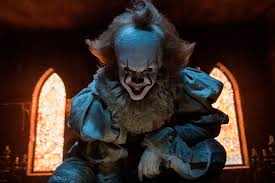
But all of this clown horror finds its ways of critiquing that nostalgia for the good ol’ days in its own way. For example, It (2017) begins - as do all other iterations of the story - with the Losers Club, the focal group of children, as children, then jumps forward twenty seven years to when they’re adults. The Losers Club has to confront the fact that no one’s childhood is how they remembered it, as do all the filmmakers who try to capture the spirit of their adolescence in their movies. In the memories of the Losers Club, Derry, Maine, was an idyll of childhood joy, but in reality it was anything but. The bullies, the abuse, and the killer clown all disappeared from their minds with time, vanished by the town.
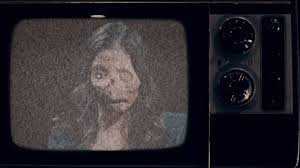
Terrifier begins in the second movie as its cold open, then goes back a year to the first Halloween massacre. The events of the first movie are distorted in the second, by news reporters and television screens. Then the events of the second movie are further blurred and pulled apart in the third, reflected through Sienna, the final girl’s trauma. Terrifier shows the detachment that memory can come with, the haziness as one tries to remember. Memory is difficult, especially in traumatic cases, or in childhood. And Terrifier shows that, while contributing to a genre revival effectively built on nostalgia in a truly meta turn of events that its creator refuses to recognize. But the circumstances speak for themselves, and the circumstances surrounding Terrifier - nostalgia, true crime, a pandemic, shifting political climates, trauma, and women who fight back, all topped of with a commedia dell'arte style clown tying the whole thing up with a bow - have influence on current culture, genre, and box office success that can’t be denied.
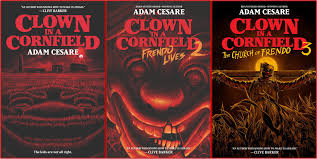
And now, the most recent addition to the genre, Adam Cesare’s Clown In A Cornfield. Clown In A Cornfield began as a book published in 2020, that then spawned a series that is currently a trilogy, with Cesare having confirmed that a draft of a fourth book is in the works. The movie came out on May 7th, and is phenomenal. Like most clown slashers, with the dubious exception of It, Clown In A Cornfield is very much a classic slasher. There are gross-out kills, big emotional moments, and a deus ex machina like they’re meant to be done. But, under all of that is a lesson about the harm in too much nostalgia. In the book, Frendo the clown, depression-era corn syrup mascot extraordinaire, is the adults of Kettle Springs, fed up with the teens’ videos, pranks, and phones. Fed up, in fact, to the point of slaughter. In the movie, it’s the same idea, but with a tradition attached to it. It is revealed that this kind of thing - all the adults in town killing the kids - happens about every thirty years, to keep the small town as stuck in the past as it can be. It’s nostalgia taken to the highest extreme, a gory love letter to the nostalgic horror trend. But even with the satire, the modernity, and the truly excellent social commentary, Clown In A Cornfield is still, at heart, an ‘80s inspired slasher. It’s everything you could want in a slasher movie, masked killer and all, a hit of nostalgia with a darkly comic tone. If this resurgence of clown horror is a result of a rise in nostalgia, then Clown In A Cornfield really is a shining example of modern horror.
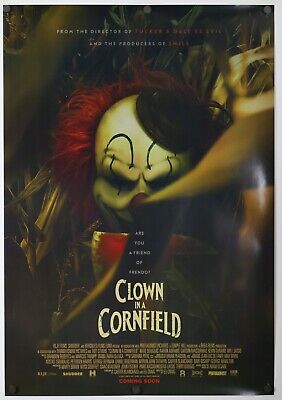
So what can we learn from these movies, and the cultural trends they resulted from? First, clowns are scary. Seems like a bit of a no-brainer, but if one of the most common childhood fears results in huge box office numbers and critical success, that shows that it carries pretty far into adulthood. People want scary clowns on their screens, because they’ve known that clowns were scary sense they were small. Clowns are a familiar kind of fear, comforting in a sort of twisted sense. Second, nostalgia isn’t always a good thing. Too much nostalgia can lend to a rose-colored view of the past, make you forget the killer clowns of your youth, and only remember enough that you want to take yourself, and others, back. Too much nostalgia can stand in the way of progress, as shown in the extreme by Frendo as the adults of Kettle Springs. Clown horror is often gory, generally darkly comic, and never boring. It is a complex sub-subgenre that brings childhood nightmares to the big screen, asking the audience to confront those fears, and that past, as both the people they are now and the children they were then. So next time you taste that cotton candy-sweet nostalgia, remember the clown that sold it to you, too. He comes with the carnival, whether you like it or not.
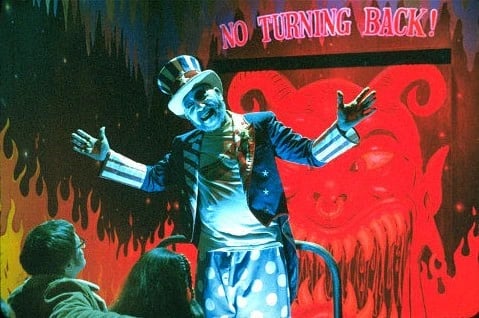
Thanks for reading all! One more month, and one more post until Friday the 13th, when you all will get to hear about how Jason Voorhees relates to To Kill A Mockingbird! (He does, trust me.) One more post before that, then Summerween begins with some summer slasher favorites. So I’ll see you all in two weeks for a surprise post, then to discuss the first ever sequel covered on this blog in Friday The 13th Part 2. Happy reading, and stay spooky! 🩸🔪🤡